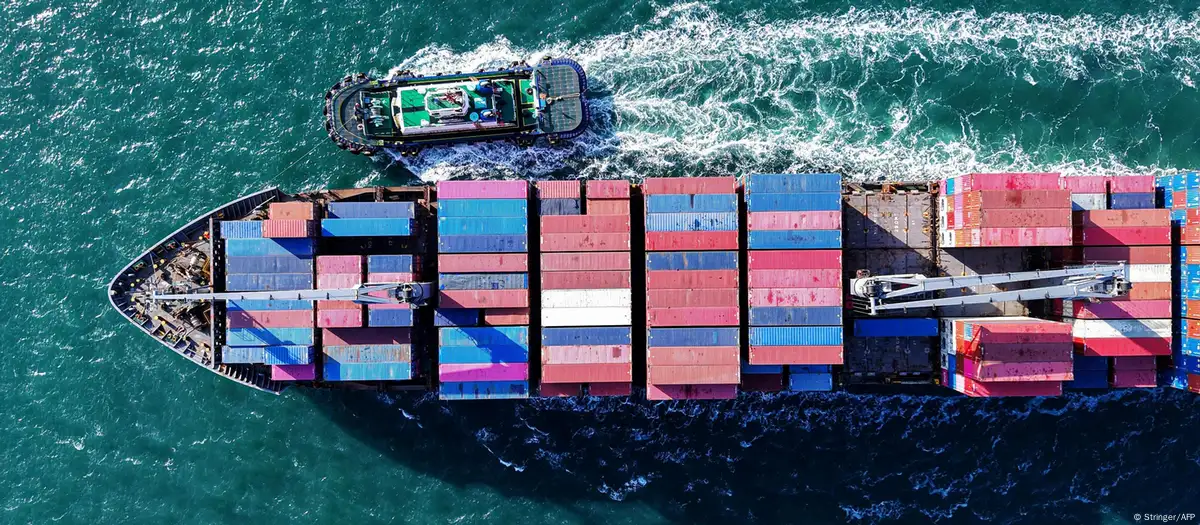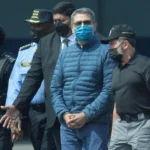
10% global tariffs announced by the US president began to be valid, making a measure that threatens to further disturb international markets.
The 10% global tariffs announced this week by US President Donald Trump came into force on Saturday (05/04), making a measure that threatens to further disturb international markets.
Last Wednesday, which called “Liberation Day”, Trump announced a minimum rate of 10% over 184 countries and territories, as well as the European Union (EU), and in some cases increased rates.
In the case of Brazil, the rate was maintained by 10%, but was increased up to 20% for EU products or up to 54% for Chinese exports that reach the US market.
This additional tariff climbing, applied only to some Washington business partners, will take effect next Wednesday.
What comes into force now is the 10% global rate that affects all products that the United States imports from other nations.
However, products already loaded on a ship and in transit to the United States before this Saturday are exempt from the 10%fare, according to the executive order signed by Trump on Wednesday. These goods are expected to reach the US by May 27 to avoid customs rates.
This exception prevents goods from the way to the United States from being affected by change in customs.
Customs rate is additional to existing taxes, but some products are exempt, such as oil, gas, copper, gold, silver, platinum, paladium, sawn wood, semiconductors, pharmaceuticals and minerals not found on American soil.
Steel, aluminum and automobile imports are not affected either, but because they are already subject to 25%surcharge.
Canada and Mexico, US partners in the North America Free Trade Agreement (NAFTA), are under a different regime: 25% on offspring products (except 10% on Canadian hydrocarbons).
Additional climb
Next Wednesday (09/04), the trade war declared by the Republican intensifies, when they are worth higher taxes to other countries, including those who export more than matter.
It will be +54% in total for China (adding several rates), +20% for the European Union (EU), +46% for Vietnam, +24% for Japan, +15% for Venezuela, +18% for Nicaragua.
The Falkland Islands will have a tariff of 41%. Argentina and the United Kingdom claim sovereignty over this archipelago, called Falkland Islands for the British.
Trump’s list affects about 180 countries and territories, including the 27 countries of the European bloc, according to an official document published Friday by the US government.
The number of most harshly punished countries has been reduced: no longer includes the French islands of St Pierre and Miquelon (in the Atlantic) or the Australian territories of the Heard and McDonald islands, in the subantarial region, inhabited only by penguin colonies.
His presence caused strangeness and gave rise to all kinds of memes about these animals on social media.
Chinese reaction
China has reacted on Friday with the announcement of additional customs of 34% on US products from April 10.
Beijing also announced controls on rare land exports, including gadolinium, used in magnetic resonance imaging, and ittrio, used in electronics.
“China made a mistake, panicked. The only thing they can’t afford to do,” Trump wrote in capital letters on his social network Truth.
The US government has warned their business partners not to retaliate their fares as they risk suffering additional overcrowding in their exports to the United States.
Threat to the basis of free trade
Trump’s tariffs threaten the fundamentals of free trade that have been defining the world for decades and have triggered a trade war with traditional Washington allies, such as Canada, and opponents such as China, which has announced their own tariffs.
The taxes also fed fears of an economic slowdown, with the largest US bank, the JPMorgan Chase, increasing the chances of a global recession from 40% to 60%.
In the US, the president of the Federal Reserve (Fed, Central Bank), Jerome Powell, warned on Friday that Trump fares could lead to higher inflation and less economic growth, noting that higher inflation could be persistent and not temporary.
Tariffs also threaten to increase the price of goods such as housing, cars and clothing in the US, particularly harming the poorest families in the country, which may suffer a capital loss of up to 5.5%, according to a study by a Yale University Research Center.
“National Emergency”
Trump imposed tariffs using the additional authority whose president is to declare a “national emergency,” arguing that the current commercial situation poses a risk to US security.
The president has promised that tariffs will take back to the US jobs that have been transferred to countries with cheapest labor in recent decades. However, in recent weeks, it has also acknowledged that there may be a painful period of “transition” to US families.
The last time US tariffs were so high was after President Herbert Hoover (1929–1933) signed the controversial Smoot-Hawley tariff law in 1930, which increased rates on many imported products to almost 40%.
This measure is believed to have aggravated the great depression, also known as the 1929 crisis, which lasted until the years preceding World War II.
Originally published by DW on 05/04/2025
Source: https://www.ocafezinho.com/2025/04/05/tarifaco-de-trump-passa-a-vigorar-contra-cerca-de-180-paises/

